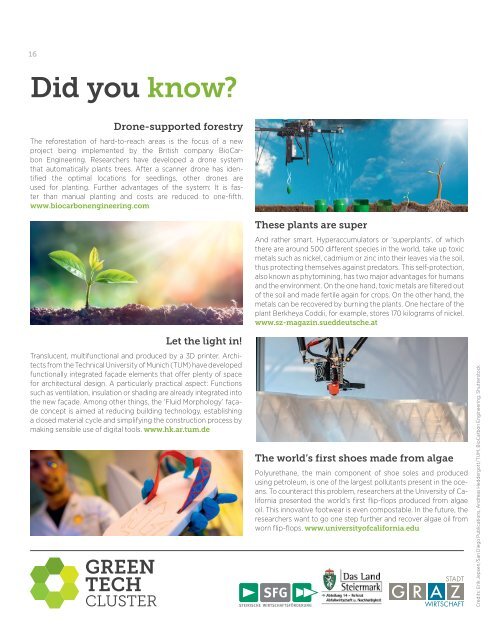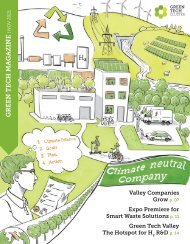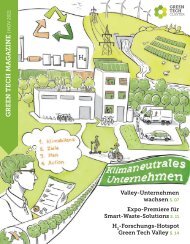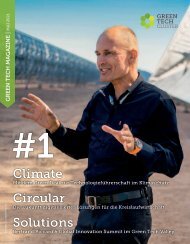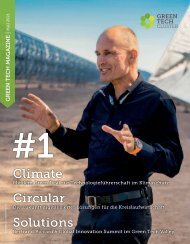Green Tech Magazine December 2017 en
Create successful ePaper yourself
Turn your PDF publications into a flip-book with our unique Google optimized e-Paper software.
16<br />
Did you know?<br />
Drone-supported forestry<br />
The reforestation of hard-to-reach areas is the focus of a new<br />
project being implem<strong>en</strong>ted by the British company BioCarbon<br />
Engineering. Researchers have developed a drone system<br />
that automatically plants trees. After a scanner drone has id<strong>en</strong>tified<br />
the optimal locations for seedlings, other drones are<br />
used for planting. Further advantages of the system: It is faster<br />
than manual planting and costs are reduced to one-fifth.<br />
www.biocarbon<strong>en</strong>gineering.com<br />
Let the light in!<br />
Transluc<strong>en</strong>t, multifunctional and produced by a 3D printer. Architects<br />
from the <strong>Tech</strong>nical University of Munich (TUM) have developed<br />
functionally integrated façade elem<strong>en</strong>ts that offer pl<strong>en</strong>ty of space<br />
for architectural design. A particularly practical aspect: Functions<br />
such as v<strong>en</strong>tilation, insulation or shading are already integrated into<br />
the new façade. Among other things, the ‘Fluid Morphology’ façade<br />
concept is aimed at reducing building technology, establishing<br />
a closed material cycle and simplifying the construction process by<br />
making s<strong>en</strong>sible use of digital tools. www.hk.ar.tum.de<br />
These plants are super<br />
And rather smart. Hyperaccumulators or ‘superplants’, of which<br />
there are around 500 differ<strong>en</strong>t species in the world, take up toxic<br />
metals such as nickel, cadmium or zinc into their leaves via the soil,<br />
thus protecting themselves against predators. This self-protection,<br />
also known as phytomining, has two major advantages for humans<br />
and the <strong>en</strong>vironm<strong>en</strong>t. On the one hand, toxic metals are filtered out<br />
of the soil and made fertile again for crops. On the other hand, the<br />
metals can be recovered by burning the plants. One hectare of the<br />
plant Berkheya Coddii, for example, stores 170 kilograms of nickel.<br />
www.sz-magazin.sueddeutsche.at<br />
The world’s first shoes made from algae<br />
Polyurethane, the main compon<strong>en</strong>t of shoe soles and produced<br />
using petroleum, is one of the largest pollutants pres<strong>en</strong>t in the oceans.<br />
To counteract this problem, researchers at the University of California<br />
pres<strong>en</strong>ted the world‘s first flip-flops produced from algae<br />
oil. This innovative footwear is ev<strong>en</strong> compostable. In the future, the<br />
researchers want to go one step further and recover algae oil from<br />
worn flip-flops. www.universityofcalifornia.edu<br />
Credits: Erik Jeps<strong>en</strong>/San Diego Publications, Andreas Heddergott/TUM, BioCarbon Engineering, Shutterstock


